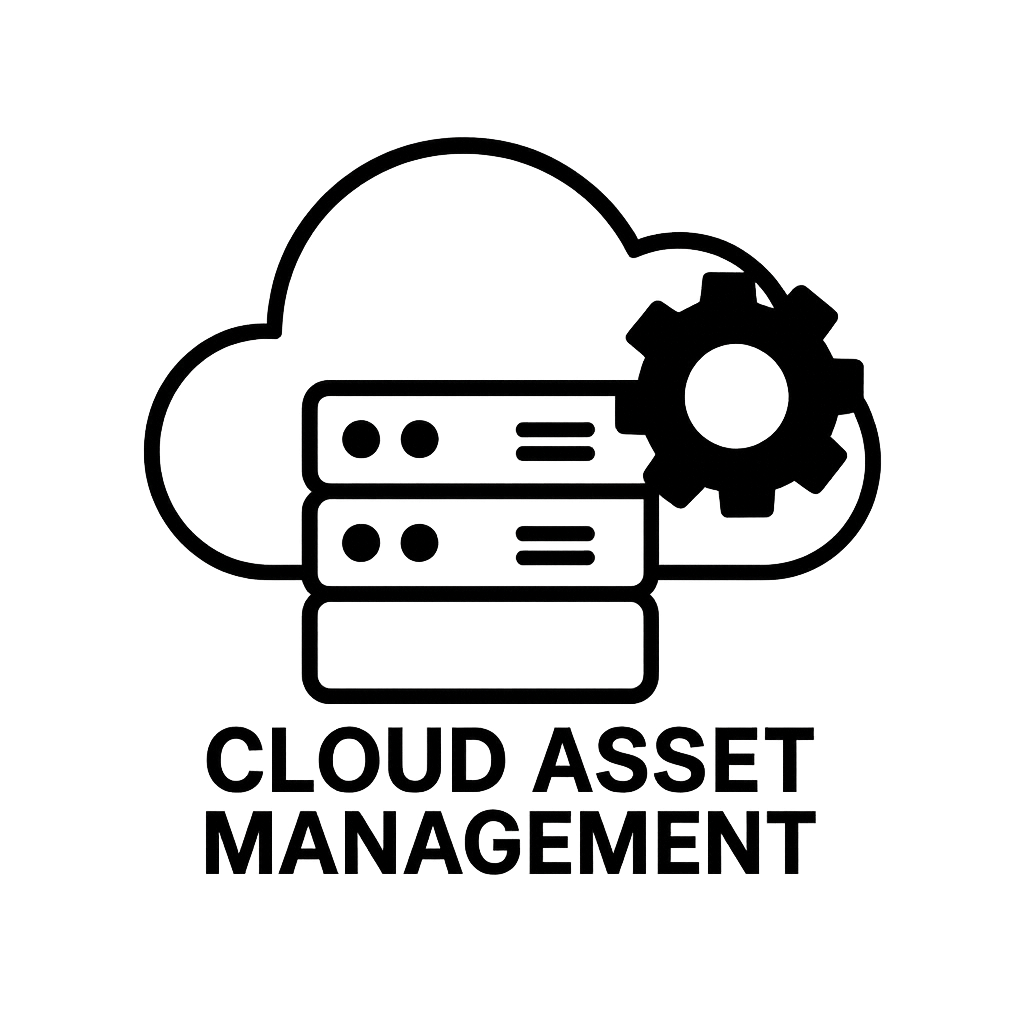Cloud Asset Management:
Governing IT Resources in the Cloud Era
 Introduction
Introduction
In the evolving digital landscape, organizations are shifting rapidly toward cloud-based infrastructures. While HAM and SAM address physical devices and software licensing, respectively, Cloud Asset Management (CAM) focuses on virtualized and subscription-based resources that operate outside traditional IT boundaries. ITIL recognizes CAM as a subset of ITAM that extends asset governance into the cloud, enabling organizations to track, manage, and optimize cloud assets in ways that align with financial, operational, and security objectives (Axelos, 2019).
Defining Cloud Asset Management
Cloud Asset Management refers to the structured processes for overseeing cloud-based resources, including subscriptions, virtual machines, storage, networking, and SaaS applications. Unlike physical or licensed software assets, cloud resources are elastic and billed based on consumption. This introduces unique challenges and opportunities. Gartner (2022) defines CAM as the practice of managing cloud entitlements, usage, and costs across providers to ensure accountability and prevent “cloud sprawl.” For instance, a company using Amazon Web Services (AWS), Microsoft Azure, and Google Cloud Platform must manage multiple pricing models, entitlements, and billing structures simultaneously.
The Cloud Asset Lifecycle
CAM operates within a lifecycle that mirrors ITAM principles but adapts them to the unique characteristics of cloud services.
The lifecycle begins with planning and provisioning, where organizations forecast cloud needs, select providers, and establish governance policies. This step often involves evaluating vendor contracts and service-level agreements to ensure alignment with organizational priorities.
Next comes the deployment stage, where cloud resources such as virtual servers, databases, or SaaS subscriptions are provisioned and integrated into workflows. Each asset must be cataloged to maintain visibility and prevent duplication.
During the usage and optimization phase, consumption is continuously monitored. Cloud billing dashboards may reveal underutilized resources, such as idle virtual machines or over-provisioned storage. By scaling services up or down, reallocating workloads, or terminating unnecessary subscriptions, organizations can significantly reduce costs.
Finally, the retirement and decommissioning stage ensures that unused resources are terminated, sensitive data is securely deleted, and billing accounts are closed. Unlike hardware assets, cloud decommissioning focuses on ensuring that contractual obligations are met and that no residual costs accumulate after termination.
Benefits of Cloud Asset Management
The primary advantage of CAM is cost control. Cloud billing models often charge on a per-use basis, meaning unused or forgotten resources can quickly accumulate unnecessary expenses. Organizations that actively monitor usage can reduce waste and optimize cloud spending.
Another benefit is risk reduction. By maintaining visibility into cloud entitlements and access rights, CAM reduces the likelihood of unauthorized usage and shadow IT. Compliance is also strengthened, as CAM ensures that data residency, security, and privacy obligations are met across multiple jurisdictions (Thomas & Tanner, 2020).
Operational agility is another outcome of CAM. With a centralized view of cloud resources, organizations can rapidly reallocate workloads or scale services to meet demand. This agility allows businesses to innovate without losing control of costs or compliance.
Challenges in Implementing CAM
Despite its advantages, CAM presents significant challenges. One of the most common is cloud sprawl, where departments independently procure cloud services without IT oversight. This decentralization complicates cost tracking and compliance.
Another challenge is the complexity of multi-cloud environments. Enterprises often use multiple providers, each with unique billing structures, dashboards, and reporting tools. Consolidating this data into a single source of truth requires advanced tools and governance frameworks.
Vendor lock-in is also a concern. Once workloads are built on a specific cloud provider, migrating them can be difficult and costly. CAM must therefore include strategies for negotiating contracts and planning exit strategies.
Finally, integration with ITAM and ITSM processes can be difficult. Without linking CAM data to the broader Configuration Management Database (CMDB), organizations may lack visibility into how cloud assets support services and infrastructure.
CAM and Its Relationship with ITAM and SAM
CAM is not an isolated discipline but functions as part of ITAM’s broader ecosystem. Its relationship with SAM is particularly strong, as many cloud services are subscription-based software applications. Integrating SAM and CAM ensures that both on-premises and cloud-based applications are monitored within a unified framework (Axelos, 2019).
Similarly, CAM complements HAM by bridging traditional physical infrastructure with cloud-based services. In hybrid environments, where on-premises servers coexist with virtual machines in the cloud, CAM ensures that resources are accounted for across both domains.
Conclusion
Cloud Asset Management has become an essential discipline for organizations navigating the complexities of cloud adoption. By managing the lifecycle of cloud resources from provisioning to decommissioning, CAM enables cost optimization, risk reduction, and operational agility. While challenges such as cloud sprawl, multi-cloud complexity, and vendor lock-in remain significant, mature CAM practices strengthen IT governance and align cloud resources with organizational objectives. As part of ITAM, CAM works alongside HAM, SAM, Information Asset Management, and SACM to deliver comprehensive control and value across the IT landscape.
References
-
Axelos. (2019). ITIL Foundation: ITIL 4 Edition. AXELOS Limited.
-
Gartner. (2022). Market Guide for Cloud Infrastructure Entitlement Management. Gartner Research.
-
Thomas, R., & Tanner, M. (2020). Data governance and information asset management: Ensuring compliance and business value. Journal of Information Systems Management, 37(3), 210–220.


 Introduction
Introduction